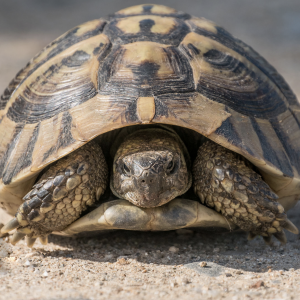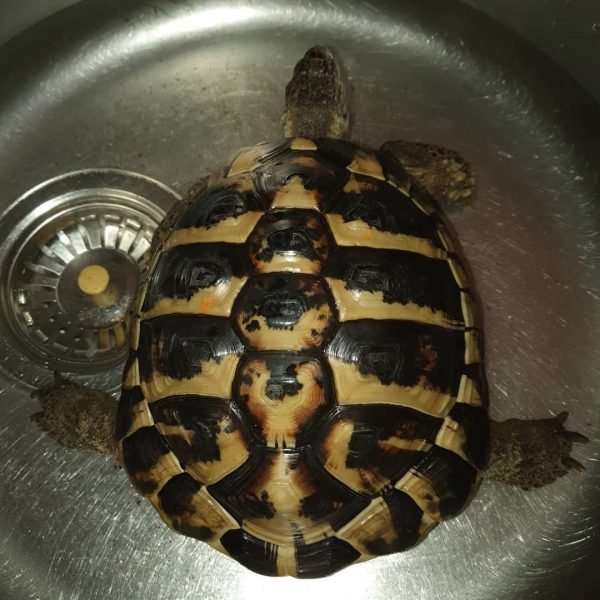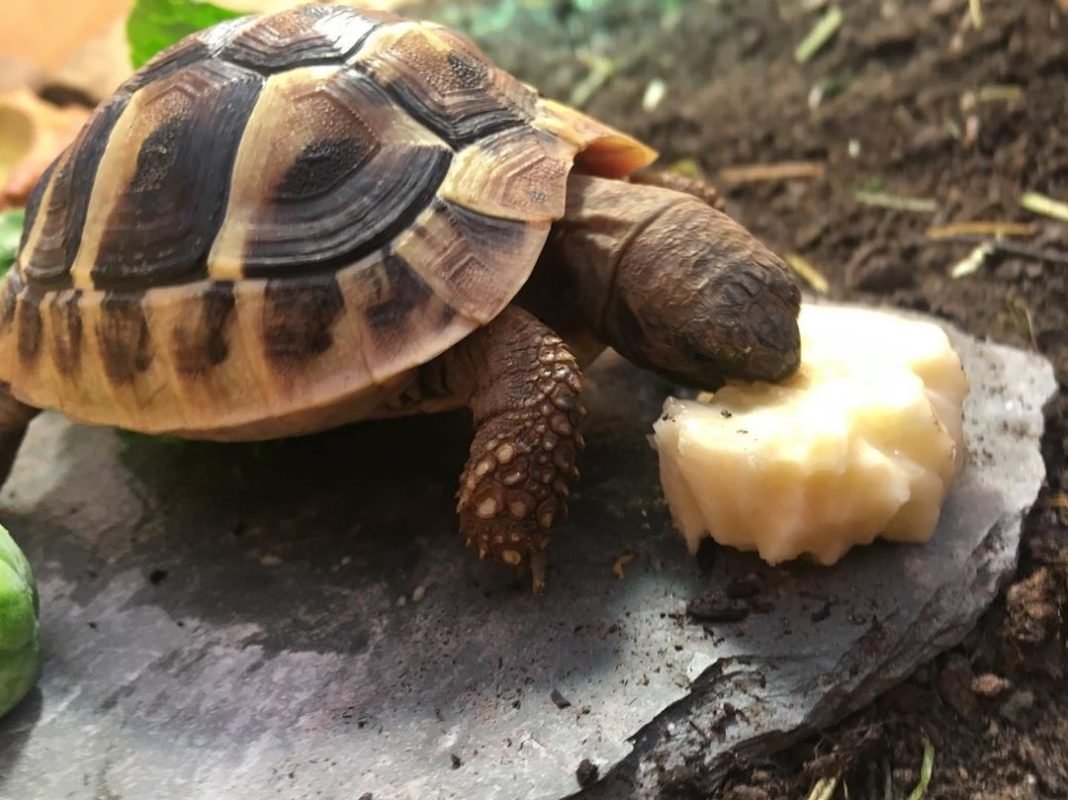PRODUCT NAME: HERMANN’S TORTOISE (Testudo hermanni)
Mediterranean Compact Heritage Model | Solar-Powered Ecosystem Engineer™
OVERVIEW
Born in the dappled light of ancient oak woodlands, Hermann’s Tortoise is Europe’s enduring ecological heirloom. Smaller than its Greek cousin (T. graeca) but radiating twice the personality, this tortoise masters survival across fire-forged landscapes from coastal scrub to mountain slopes. A walking lesson in “slow sustainability.”
KEY FEATURES & SPECIFICATIONS
-
Signature Design Elements:
-
Carapace Artistry: High-domed shell with bold black-and-yellow “keyhole” patterns (each scute uniquely contoured). Subspecies vary:
-
T.h. hermanni (Western): Rich gold base, seamless black bands.
-
T.h. boettgeri (Eastern): Larger, paler background with fragmented markings.
-
-
Tail Architecture: Nail-tipped tail + split supracaudal scute (key ID vs. Greek tortoise).
-
Defense System: Semi-mobile hinged plastron for predator protection.
-
-
Performance & Efficiency:
-
Compact Dimensions: 13–20 cm (5–8 in); rarely exceeds 28 cm. Weight: 2–4 kg.
-
Solar Operation: Bask-driven metabolism (requires 4–8 hrs daily UVB exposure).
-
Mobility Package: Scaled legs for digging/climbing + terrain-sensing blunt claws.
-
-
Environmental Programming:
-
Hibernation Protocol: Built-in “latency mode” (4–5 months underground at 5°C).
-
Drought Response: Aestivation-ready during summer scorch (burrow refuge).
-
Diet: Wild herbivore mix (dandelion, clover, thistle) with calcium-rich snail shell snacking.
-
HABITAT RANGE & EDITIONS
-
Native Showrooms: Fragmented across Southern Europe:
-
Western Limited Edition: NE Spain, S. France, Italy, Balearic Is.
-
Eastern Extended Range: Balkans, Greece, Turkey, Romania.
-
-
Optimal Terrain: Mosaic habitats – sunny meadows, open forests, maquis shrubland. Avoids wetlands.
CONSERVATION STATUS
-
IUCN: Near Threatened (Western subspecies: Endangered).
-
CITES: Appendix II (trade regulated but illegal poaching rampant).
-
Wild Population: Declining by 30%+ in core regions due to:
-
Habitat Loss: Vineyard/urban expansion fragmenting corridors.
-
Pet Trade Plunder: 10,000+ poached annually for European black markets.
-
Fire/Climate Impact: Nest mortality >90% during heatwaves.
-
USER EXPERIENCE (Ethical Guidelines)
⚠️ Wild Adoption = Ecocrime! Captive care demands:
-
Enclosure: Escape-proof outdoor garden (15 m² min) with hibernation box.
-
Climate Control: Must replicate native seasonality (hibernation non-negotiable).
-
Diet Caution: High-fiber weeds only. Fatal if fed fruit/dog food!
SUBSPECIES COMPARISON
| Feature | T.h. hermanni (Western) | T.h. boettgeri (Eastern) |
|---|---|---|
| Size | Smaller (13–18 cm) | Larger (15–28 cm) |
| Coloration | Vivid yellow, solid black bands | Olive-grey, broken black patterns |
| Tail Spur | Always present | Often reduced/absent |
| Rarity | Critically Endangered in wild | Relatively stable |
ECOSYSTEM SERVICES
-
Seed Dispersal: Moves 200+ plant species annually.
-
Fire Prevention: Grazes flammable undergrowth.
-
Bioindicator: Shell annuli record environmental health (like tree rings).
CONSERVATION SUPPORT PACKAGE
-
Habitat Guardians: Testudo Alliance (France) protects nests from boars/foxes.
-
Breeding Assurance: European Studbook (ESB) manages genetic diversity.
-
Rewilding: Releases in Mallorca’s Albufera Reserve.
CULTURAL FOOTPRINT
-
Symbolism: Embodies longevity and grounded wisdom in Balkan folklore.
-
Historical Witness: Roamed Europe before the Parthenon was built.
Final Verdict:
Hermann’s Tortoise is biodiversity in miniature — a sun-chasing, hibernating, meadow-tending relic that fits Europe’s fraying ecosystems like a keystone. Not as massive as an Aldabra, nor as rare as an Angonoka, but radiating a charm that’s inspired conservation armies.
“To save Hermann’s Tortoise is to preserve the rhythm of the Mediterranean itself — slow, ancient, and irreplaceable.”
— Conservation Biology Journal




Reviews
There are no reviews yet.